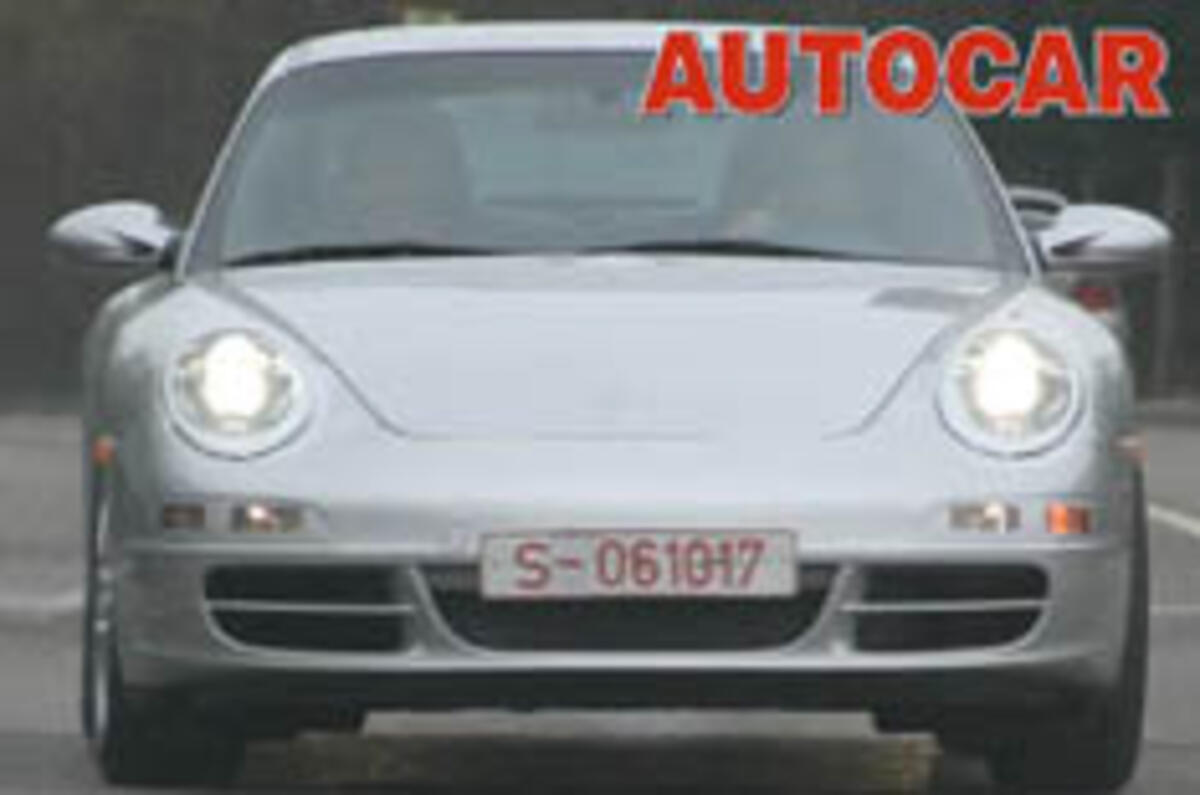One of 2004’s crunch new cars, the new Porsche 911, is finally uncovered today. Autocar’s exclusive photographs of this barely disguised example reveal for the first time dramatic new details of Porsche’s reworked sports car, suggested in our artist's impression (right). The new 911, codenamed 997 to replace today’s 996, and revealed in more detail in our gallery, will not be shown publicly until September’s Paris Motor Show before arriving at UK dealerships in October. The most obvious change outside is the loss of the ‘runny egg’ headlamps, which revert back to a simple oval shape, although many other exterior details such as bumpers, spoilers and lights, are also modified. But the biggest changes lie under the skin and in the cabin.
Unlike the outgoing 911, which departed radically from its forerunner in every single aspect of its design and engineering, the new one is described by Zuffenhausen insiders as being very evolutionary – more along the lines of a major facelift than a completely new car.
Behind the fresh appearance, it shares crucial hard points such as the angle of its windscreen, the shape and size of its door apertures, turret line and 2350mm wheelbase with the car it replaces. It’s also extremely close to today’s 911 in size: around 4430mm long, 1765mm wide and 1305mm high.
Power for the new 911 comes from an updated version of Porsche’s familiar water-cooled 3.6-litre flat six-cylinder engine. The four-valve-per-cylinder unit has been fettled to produce around 345bhp – up 25bhp on the existing model. An even stronger version, with up to 380bhp, is rumoured to be under development for the new 911 S.
Helping make the most of the engine’s increased output is a revised six-speed manual gearbox, as used by the prototype pictured here. For the first time on the 911, buyers will also be able to pick a six-speed Tiptronic with steering wheel-mounted shift buttons.
Another significant transmission development is Porsche’s decision to offer the new 911 with an optional dual-clutch gearbox, similar to the DSG ’box pioneered by Volkswagen and Audi.
Eschewing the trend towards expensive aluminium construction, the new 911 sticks with a bodyshell fashioned predominately from steel. Careful optimisation of panel thickness has helped boost overall rigidity while allowing engineers to keep weight close to 1400kg. The 30kg increase over the outgoing 911 is largely the result of added safety measures incorporated into the front end of the floorpan, according to Autocar sources.
Despite the small increase in weight, extra power outputs should ensure the new 911 is every bit as quick as today’s model against the stopwatch. A power-to-weight ratio of about 240bhp per tonne suggests a 0-60mph time of under 5.0sec for the Carrera 2 – perhaps even faster for versions fitted with the quick-shift dual-clutch arrangement. Top speed is likely to stretch to 180mph – prototype speedometers have read up to 330kph (205mph).
Underneath, the new 911 has come in for a host of detailed changes. Included are wider tracks, revised geometry for its MacPherson strut (front) and multi-link (rear) suspension and altered elasto-kinematic properties – all designed to ensure it is every bit as engaging as its predecessor to drive.
Our first photograph inside the 997 reveals a newer, Cayenne-inspired cabin. Individually cowled dials are centred around the rev counter, but are now housed under a more distinct, single binnacle. The centre console and air vents, meanwhile, have been redesigned as a one-piece panel with a more logical layout – and look less like an afterthought as a result. There is even space for storing a mobile phone ahead of the gearlever.
Despite myriad changes, the new 911 is not expected to be lumped with sweeping price rises. Dealer sources expect the base Carrera 2 to be pitched at around £59,000. That’s up £2400 on today’s car, though much of this will be offset by improved levels of standard equipment.




Add your comment